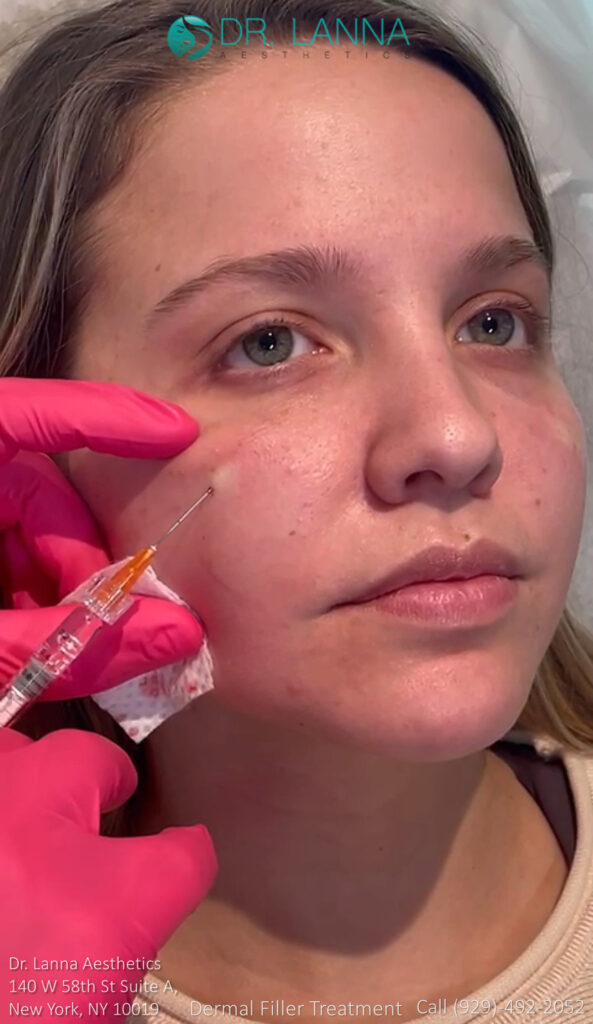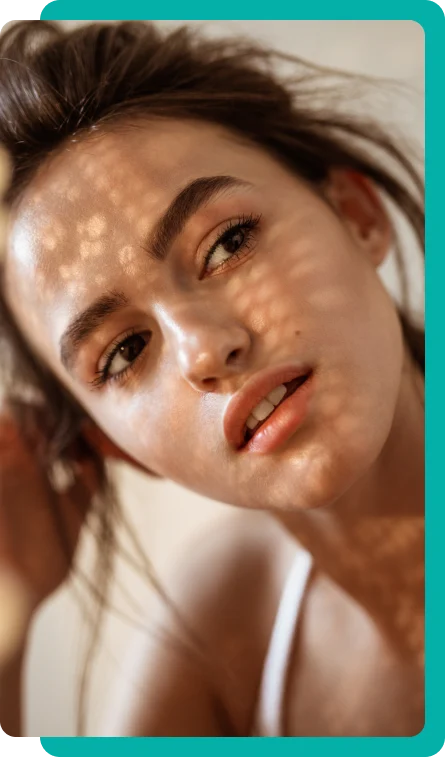Dermal filler injections are more than just for erasing facial wrinkles and smile lines. They can also enhance facial features using treatments like a non-surgical brow lift, lip filler treatment, tear trough injection, and cheek augmentation. For those interested in trying cheek fillers soon, one of the questions asked by new patients is the right age for injectable dermal filler.
So what’s the best age to get dermal fillers for the cheeks? Anyone who wants to increase cheek volume using facial fillers can get them as long as they’re over 21 years old with good overall health. Most people receive cheek fillers during their 30s and 40s, but patients in their 20s may also get cheek fillers for preventative measures.
What’s the Recommended Age for Getting Cheek Fillers?
Injectable filler treatment is one of the most popular minimally invasive treatments in the country with about 3.4 million procedures performed in the latest ASPS report. It’s a safe but highly effective way to get rid of different signs of aging without a surgical facelift.
As people age, the collagen and hyaluronic acid levels in the body also gradually decrease. This causes other signs of aging to show up, like loss of facial volume that leads to hollowness in the cheek area. Facial filler injections can restore the lost volume and smooth any frown line, fine line, or nasolabial fold that appears around the lower and mid-face region.
Although this cosmetic procedure is typically catered to women in their 40s who want to increase cheek volume and enhance facial contours, many younger patients are also inquiring about hyaluronic acid fillers to match the look of their favorite celebrities.
Take note that there’s no one recommended age for starting cheek fillers – as long as you’re over 21 and you’re comfortable about getting the dermal filler treatment, then talk to a trusted provider about it. To give you an idea of what happens when you receive a filler injection at different ages, here’s a timeline to look at:
Fillers During Your 20s
No one is too young for cheek filler treatments, as long as they’re over 21 years old. Even if the patient hasn’t developed signs of aging yet, hyaluronic acid filler injections can enhance the facial profile without the need for plastic surgery. This treatment is perfect for patients who experience severe facial volume loss because of a health condition.
Although cheek fillers are safer than cosmetic surgery, they still come with certain risks that patients should be aware of. There are certain expectations and conditions that younger patients must understand before deciding to start cheek filler treatments early.
For example, trying to stop the skin’s aging process using dermal filler gives many patients the impression that it may transform their entire life. It may even lead to neglect in taking proper skincare steps because they believe dermal fillers can solve their skin problems instantly.
There’s nothing wrong with getting cheek filler treatments early if you want to highlight the facial contours, but it’s still crucial to proceed with caution in everything you do.
Fillers During Your 30s and 40s
Many patients start their cosmetic treatments during their late 30s or early 40s because this is when visible wrinkles start appearing on the skin. Around this age, the collagen levels in the skin have significantly decreased, causing fine lines and wrinkles to appear and cheeks to lose their natural volume.
Hyaluronic acid fillers and other types of dermal fillers instantly replenish some of the lost volume in the cheeks while stimulating natural collagen production for long-lasting anti-aging results. Since people in their 30s or 40s are still in their early phase of aging, the goal of getting dermal fillers is to slow the aging process and prevent fine lines from worsening.
Fillers During 50s
Patients in their 50s or older are often hesitant about getting dermal filler injection for their cheeks because they think it’s already too late for them or they believe their appearance won’t improve with simple injectable treatments. But HA filler treatments can still enhance their facial profile and get rid of signs of aging.
But the downside of getting cheek fillers at this age is that the patient’s skin might be too weakened to return to its wrinkle-free state. To achieve the best results, the plastic surgeon might recommend an accompanying cosmetic surgery or prescribe other minimally invasive treatment options like Botox treatment or laser treatment. These procedures enhance the results of cheek fillers for a better anti-aging solution.
Another factor to consider is the patient’s overall health at this age. They might be taking certain medications to help manage their health condition, which might affect their cheek filler treatment and recovery. Make sure to consult a primary physician first to find out if you’re healthy enough for Botox injection, dermal filler, or other cosmetic treatments at this age.
Is Someone Too Young or Too Old for Cheek Fillers?
Everybody matures at different rates, so there’s no such thing as being too young or too old for cheek fillers. More than physical age, it’s important to consider other factors that might affect the treatment and recovery – like the kind of expectations for the treatment, overall health, and medications you’re taking. As long as the patient is healthy and over 21 years old, they can opt for filler injections at any age they’re comfortable with.
Other Factors to Consider Before Getting Cheek Fillers
Age is only one of the many factors to consider when receiving cheek filler treatments. To help you decide if it’s the right time for dermal fillers, here are some of the most important things to look at:
1. Type of Dermal Filler
Dermal filler comes in different types and brands. They all aim to give patients a younger-looking appearance and restore facial volume, but they do it using different active ingredients, formulations, and mechanisms. When deciding on a specific cheek filler injection, it’s crucial to consider how long it lasts on the treatment area and if you’re not allergic to its ingredients.
For cheek fillers, some of the best hyaluronic acid fillers are Juvederm Voluma XC and Restylane Lyft. They both have thick formulations that hold their shape when injected into the cheek area. Radiesse and Sculptra are also great options if you’re looking for longer-lasting fillers. These injectables are made of CaHA microspheres and poly-L-lactic acid microparticles.
2. Cost of Cheek Fillers
Most cheek filler treatments are performed for aesthetic purposes, which means they’re not typically covered by insurance. These procedures require multiple treatment sessions every few years or months, so patients need to make sure that they’re financially capable to pay everything out of their pocket.
3. Patient’s Overall Health
Certain medications and health conditions affect how the body responds to the cheek fillers. They may interfere with the filler’s mechanism or the patient’s recovery, so it’s best to consult a physician first before undergoing non-surgical cheek enhancement.
4. Expectations About the Treatment and Its Result
Cheek fillers also have different effects on people of various ages and skin types, so patients should have realistic expectations about their treatment. For example, younger patients may not see much difference if their skin is still supple and healthy while older patients might not return their wrinkle-free skin if there’s too much skin laxity. Make sure to talk to a filler injector to understand what these cheek fillers can do for you.
Natural-Looking Cheek Fillers by Dr. Lanna Aesthetics
Dr. Lanna Aesthetics is a trusted provider of cheek fillers and other cosmetic treatments like lip augmentation and body contouring. We understand the desire of our patients to look and feel their best at any age, so we always make sure to develop the best aesthetic treatment plans for them. Know more about our cheek filler treatments and other services by calling us now to book an appointment.



